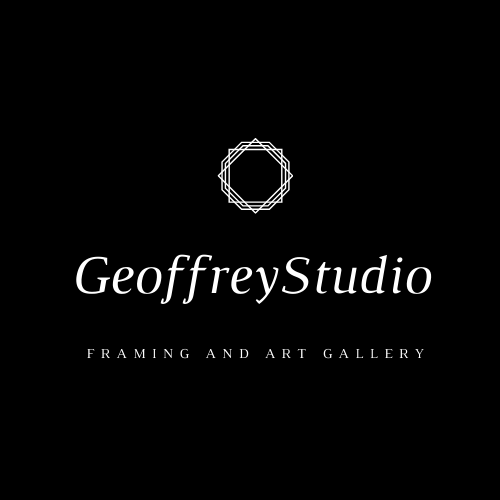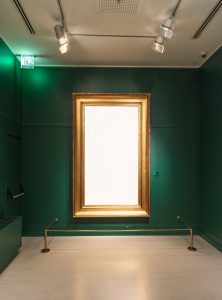
Framing Art — 101
Everyone wants the artwork they have created or purchased to look it best when hanging on a wall.
Framing shops have guidelines they go by but it really depends on the piece itself, where it will be hanging and personal preference of the owner. This is why going into the frame shop to make your decisions often eliminates many mistakes.
Professional framers typically agree on some basic guidelines for artwork such as oils and acrylics. Here are just a few:
1- Classical painting often look great in gold leaf or a dark elegant wood like walnut or mahogany frames
2- Abstract or Contemporary art seem to shine in simple or sharp edged frames
3- Other art such as lighter or more abstract paintings may look best in sleek, less fussy frames
4- For paintings that are in-between, you can go the traditional route or contemporary
5- For large art works take look a wide molding from
6- The color of the frame should not compete with the colors in the art work but compliment them
7- Don’t feel like you need to match the other frames you have hanging now—variety is the spice of life
8- Basics for framing art on paper for art such as watercolors, pastels, charcoal drawings and others: it is important to be mounted first on support material such as archival foam board with acid free adhesives or corner pockets with a good glass for protection
9- Glass: Regular glass is ok if the work is not overly expensive or will not be in direct sunlight, non-glare is best for those pieces of art exposed to UV rays, museum glass is the top of the line—it offers a clear and gla
Our featured artist for December 2019 month is Mitch Silver.

He has been painting his whole life and was taught originally by his Grandmother, Dottie King.
He grew up in NYC and discovered a love of graffiti at a young age. After being beat up by a transit cop in the Bronx, he decided to move his focus to canvas.
He attended Parson’s School of Design in Manhattan for a short time, then he lost my way and became a lawyer. Luckily, he found his way back to art eventually, and here he is.
Mitch has many different styles and keeps adding more. This is what keeps him excited about painting.
He views art as a vehicle for personal expression. His hope is different people see different things in his work, as he feels like he channel subconscious energy into his work that leaves secrets in his paintings that are waiting to be discovered. http://mitchsilver.com
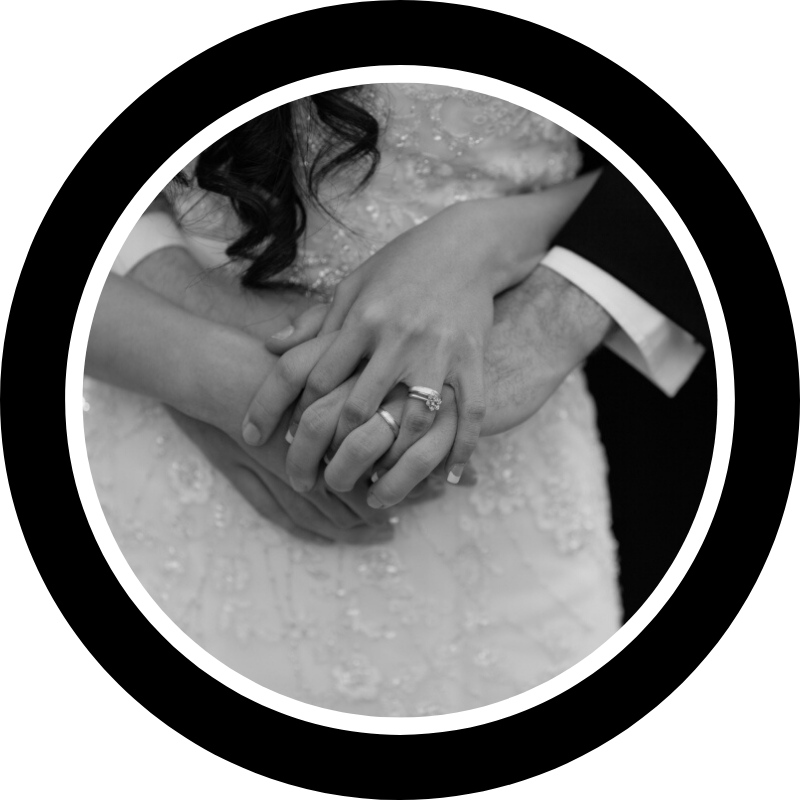
Yet, if you are framing a photo you want to keep for a lifetime such as a baby, wedding, special event, once in a lifetime vacation and more these might NOT be the best option for you.
Why?
They are inexpensive for several reasons:
– The glass not designed to protect the photo from sunlight, even though you think it might be a dark corner
– The matt and glass often does not provide the right air gap so the photo can warp
– The backing board is not the best or missing in order to protect your photo from dust, insects, paint fumes, cleaning chemicals, moisture and more
– Lignin, found in less expensive wood frames, can also fade or yellow photographs
– Not designed to prevent insects from making holes and stains
Here is what to do instead to protect the image:
-Choose your glass with care, select an anti-reflection or non-glare glass and UV filtering glass may be appropriate for some locations.

-Choose a mat board made from cotton rag or alpha cellulose or acid free
-Select photo-safe adhesives, and other materials marked “museum quality.”
-Make sure to include picture frames spacers to prevent the image from sticking to the glass.
-Properly put backing paper to seal the photo against humidity, insects and other pollutants
If you wish to protect your important photos properly by doing it yourself consider taking it to a professional framer such as Gallery 17.92 / Geoffrey Studio
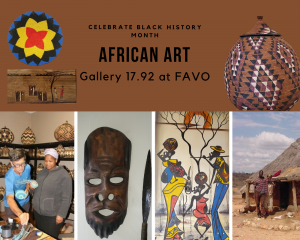 To Celebrate Black History Month Gallery 17.92 and Geoffrey Studio has teamed up Dave Manor & Liza Vorster to Help Support Native African Artist
To Celebrate Black History Month Gallery 17.92 and Geoffrey Studio has teamed up Dave Manor & Liza Vorster to Help Support Native African Artist
In 2000 Dave Manor went to South Africa on what became a long strange journey. The journey ended up lasting 3.5 years when he discovered the best way to meet a nation was through its’ artists.
He began to seek out to meet and befriend some Africans selling art along the road. He then discovered Zimbabwe was the African nation most famous for art. He organized road trip to seek out art. This trip led to him to an undiscovered art world and his need to support these African artists, who were often poor and found art as an only mean to support their family.
Dave began buying art in Zimbabwe and neighboring nations (Namibia & Mozambique). At first he bought pieces in small lots and started to display this art in the hiking lodge he was running. He ended up enjoying the art and artist so much that he organized a container full of his favorite art to ship home in Orlando to share with others.
Dave ended up meeting Liza, a native South African, on one of his journey’s. Because Liza had a passion for hiking, art and minerals like Dave she ended up moving with him to the USA. Today Liza & Dave sell a wide range of African art and minerals from a home base in Orlando. They often return to Cape Town to visit family / friends and to buy more art and minerals.
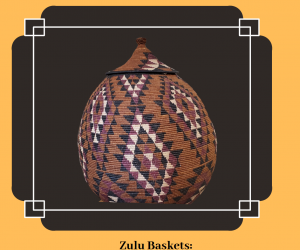
Zulu Baskets:
Zulu baskets are produced in South Africa specifically by the native KwaZulu-Natal formerly Nguni people of Southeast Africa. Zulu baskets are made and derived from natural elements in reach of the people of Africa. More specifically, Zulu baskets are made out of llala palm and sisal leaves. With this, Zulu Basket weavers use techniques such as obtaining certain colors of baskets by dying natural materials. Zulu Baskets are also made from boiling roots, leaves, berries, bark, or other organic material of indigenous flora. A main technique used by weavers is to dry the strips of bark in order to achieve a waxy texture and layer for a more smooth feeling and easier weaving.
Back in the 19th and 20th century, “Zulu baskets were made strictly for utilitarian use, as containers for food and liquid, and often for the consumption of beer.” (Van Heerden) Nowadays, the Zulu baskets are still used for a variety of things. From clothes to liquid, these handmade baskets are used to provide convenience, organization, and income. The Ukhambra is of more home use where it stores food, clothing, or anything that can manage to fit; an all purpose basket.
Zulu, the recognizable symbols and markings are as follows:
DESIGNS
Triangle — The triangle pattern stands for a masculine symbol. If it contains a double triangle, it signals for a married man.
Series of Diamonds — The series of diamonds also tells about Shaka only this time it displays a feminine symbol along with the representation of the “shields of Shaka.”
Checkerboards, Whirls or Circles — All of these markings call for different categories whether its good news, arrival of a new baby, good rains, and/or plentiful harvest.
Diamond — The diamond design is referred to as a feminine symbol. if it contains two diamonds that make an hour glass shape, it distinguishes a married woman.
Zig-Zag — The Zig-Zag displays a masculine figure along with representing the “spear of Shaka” who in old times was the leader of the Zulu people.
Points Around the Outside — These tiny details show the number of cattle paid as bride-wealth for a wedding.
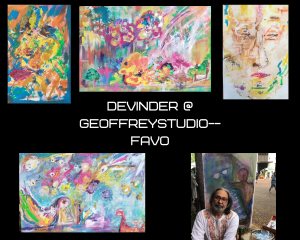
Devinder attended RISD (Rhode Island School of Design) and has been trained as a classic painter. His painting style is Neo Imperialism or Post impressionist Art. This style evokes a feeling between the observer and canvas. Neo Imperialism also allows wider range in a color palette not available to impressionist artists like Monet, Dagas and Cézanne .He has had three one person shows and one show with Abstract Expressionist —Judith Lindbloom: /www.instagram.com/judith_lindbloom.
The handbags and accessories he developed have been sold in Anthropologie, Urban Outfitters, Forever 21, and other national retailers. In addition, they were featured in leading publications including: Lucky Magazine, O Magazine, Redbook, Good Housekeeping and others. His handbags have been owned and collected by Barbara Bush’s family, Sarah Ann McLachlan, Iris Apfel, and many others. He was decorated as a finalist at the Independent Handbag Design Awards 2014.
Stop in at Gallery17.92 / GeoffreyStudio on March 6th to meet Devinder in Person
Or stop by Feb 15th-March 15th between 10am-5pm to make a purchase
Follow him on Facebook: www.facebook.com/devinder.singh.714
